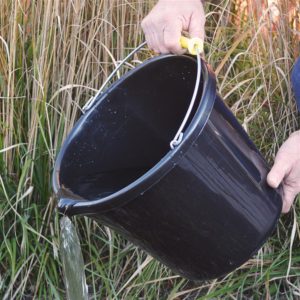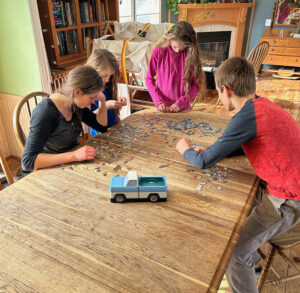There are just some things which simply belong together. For instance consider fried chicken and mashed

potatoes, burgers and fries, windy days and kites, and country homes and orchards. While I really like all those things, let’s focus on the fruit trees.
Fruit trees have been a part of country living for all eternity it would seem. My parents used to have apple trees in their backyard, my grandparents had a small orchard on the farm, and my great grandparents had a similar collection of apple and peach trees on the sunny slope just down the ridge from their Ozarks log cabin. While I can’t trace my lineage in a straight line back that far, it’s my understanding that even Adam and Eve had an apple tree in their garden back in the day.
Let’s talk about what it takes to keep them healthy and producing for years to come. I’m not an arborist, but I did talk to a couple and do some research when my wife announced a couple years ago that she wanted to plant an orchard in our front yard.
That next spring we ordered 30 trees from a well-known nursery, and a few weeks later a big brown delivery truck left a long slender box on our front porch. That Saturday morning I hooked the auger to my antique 1953 Ford Jubilee tractor and dug some holes, and by day’s end we had ourselves an orchard. The same could be accomplished with a little more labor using a set of hand-operated post hole diggers or auger.
The initial work done, all that was left was to sit back and watch our trees grow … that is, except for annual pruning. Properly pruning fruit trees is simple and enjoyable work that keeps the plants healthy and productive. Trees are pruned to allow for strong branches which receive enough sunlight to produce good fruit and enough air movement to keep down any potential problems from mold or fungus. A primary goal is avoid steep upright branch angles which result in limb breakage or splitting under the weight of the fruit load. Even then, you’ve likely seen an older fruit tree which the caretaker has shored up with boards to support the weight of the fruit-laden branches by late summer.
Fruit trees can be trimmed at any time. Still, as with most things in life, there is a season that works best and in the case of fruit trees that is very late winter to early spring. When a tree goes dormant for winter the life-giving sap (energy) is stored in the roots and trunk for the most part. Removing limbs or even smaller shoots at this time robs the tree of little energy.

Still the key is to wait as late as possible to prune just before blooms appear and new growth begins. Prune older trees first, because younger trees are more prone to suffering the ill effects of winter.
City folks sometimes believe that country skills are simple work that anyone could do with ease. We know that’s not the case, and even something as basic as plowing a garden can require close attention to detail when setting up the plow to get the correct angle and pitch to result in the right depth and a good clean furrow. Pruning trees is much the same. While we’re simply snipping off branches to promote stronger, healthier growth, where to cut and how to cut must be considered.
First, cuts should be made at angles to allow for water to shed off the fresh cut and not pool and promote disease. The two main cuts used are the “thinning cut†and “heading cut†A thinning cut removes a new limb, or “shootâ€, back to a side shoot. A heading cut is made to encourage growth of all buds below the cut. A third cut, often referred to as a “bench cutâ€, removes upright shoots back to more horizontal-growing branches and helps to open up the center of the tree to allow sun and air to penetrate more.
When making any pruning cuts always cut flush without leaving any significant stubs. Again, remember to angle the cuts so water will not pool on the fresh wound and promote mold or disease. For small limbs you can use a pair of gardener’s snips, but for mature trees or larger limbs turn to a pair of lopping shears or saw. Whichever you choose, make sure the tool is sharp and will make a clean cut. Ragged cuts heal slower and make the tree more susceptible to bugs or disease. The day we prune trees we usually make the rounds with our cutting tools and a yard or garden cart to haul away the discarded foliage.
A method often used for cherry, plum, apple and pear trees, as well as pecan, is the “central leader†system where a main truck is kept intact and a “scaffold whorl†is created by pruning to maintain a few select branches during the first year of pruning. At this point you’re looking for branches that span out from the main trunk in each direction, so as not to create more growth and weight in future years as the tree grows and begins bearing fruit. As the tree grows you will want to allow about two foot of growth on the main trunk and then prune to create a second, slightly smaller whorl. As the tree progresses continue the pruning in that way to allow ample light, moisture and air to reach all branches of the tree. Once the desired height is reached you can do a heading cut to halt vertical growth.

The finer studies of pruning and training methods are nearly as plentiful as the varieties of trees available today. But this simple method will work well for most species and results in a healthy, productive tree that will honor your efforts with an abundance of fruit in coming years. Remember, it usually takes at least three years to see the first fruits. We lucked into having one of our new trees turn out to be an “early bloomerâ€, and enjoyed the fruit of our labor in only the second year … one small peach divided four ways and consumed with a bowl of homemade ice cream.
With any age of tree, but especially an older one, start the annual pruning by removing any dead, diseased or damaged wood. Such waste will only open the plant up to unwanted invaders of the fungal or insect type. Of course, pruning in late winter or early spring sometimes makes it more difficult to ascertain the health of a limb. It pays to inspect the trees while harvesting fruit and make any necessary notes for the next pruning time.
If you find yourself suddenly in possession of a mature fruit tree, or hopefully more than one, you can still make the most of what might have been a history of poor pruning or even negligent ownership. Just like a young tree, the goal is to assure adequate light and moisture penetration while keeping the branches which are most likely to produce fruit without breaking or splitting from the weight load.
Don’t get too aggressive in thinning and pruning and remove too much of the canopy. Overly aggressive pruning can result in too many leaves and less fruit. Work to reshape and correct problems with the branches in subsequent years.
The rewards of harvesting fresh fruit from your very own trees can be every bit as, or even more, enjoyable than growing your own produce. Just be patient and diligent in your pruning and care year after year. And remember that growing an orchard is a journey and not a race.


































Thank you for the information. This is the second season for my apple trees. I bought them from a sale and I think they were about 2 years old when I got them. I was dismayed this year to discover critters had been chewing the bark off around the bottom. After a quick search on the internet I figured out it was most likely rabbits. We have since surrounded the trunks with mesh wire to thwart the little nibblers.